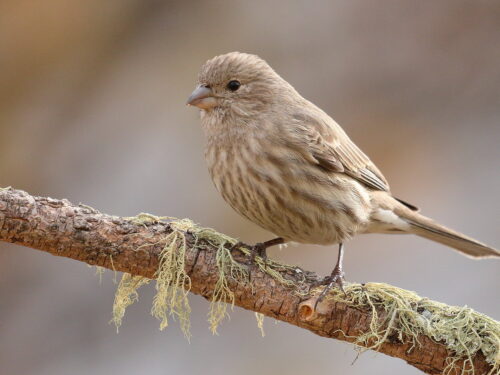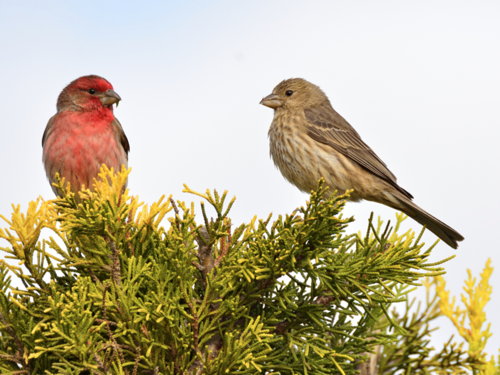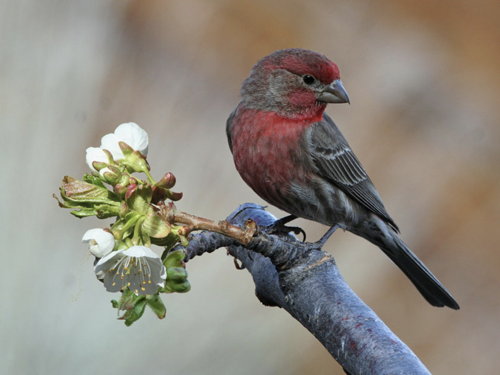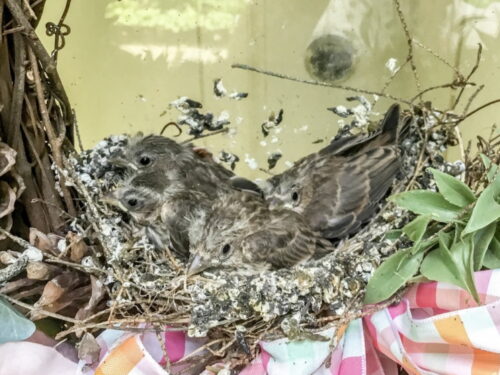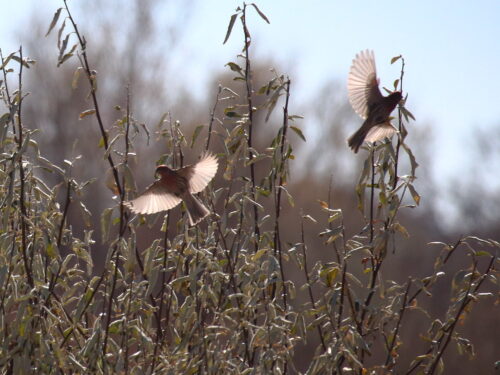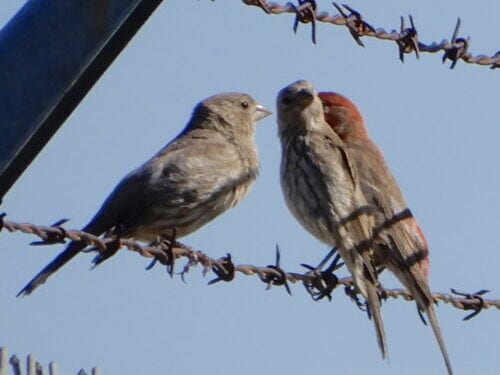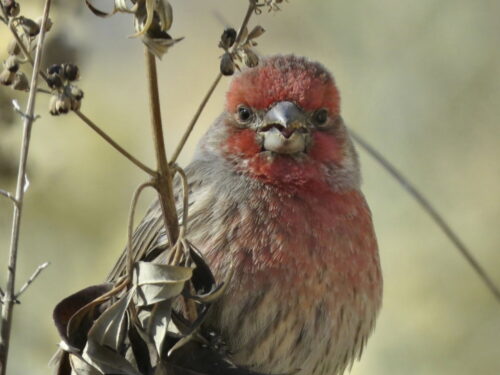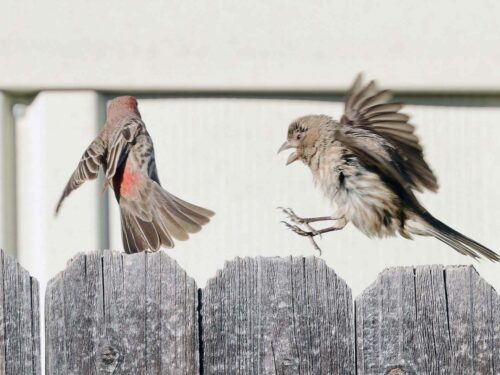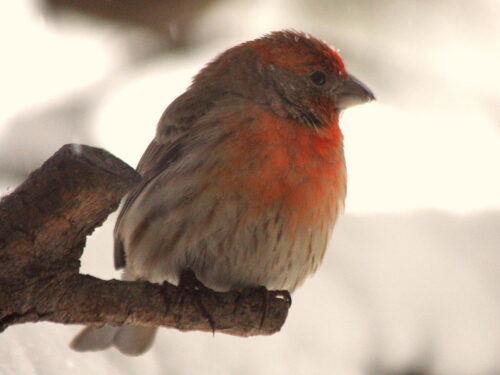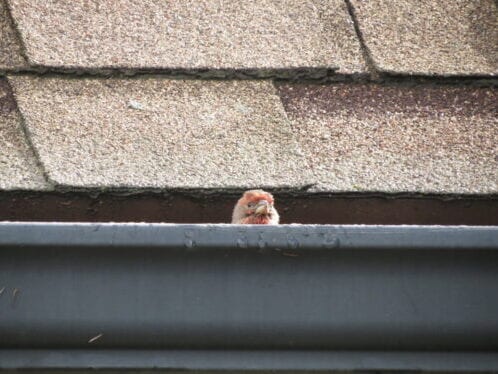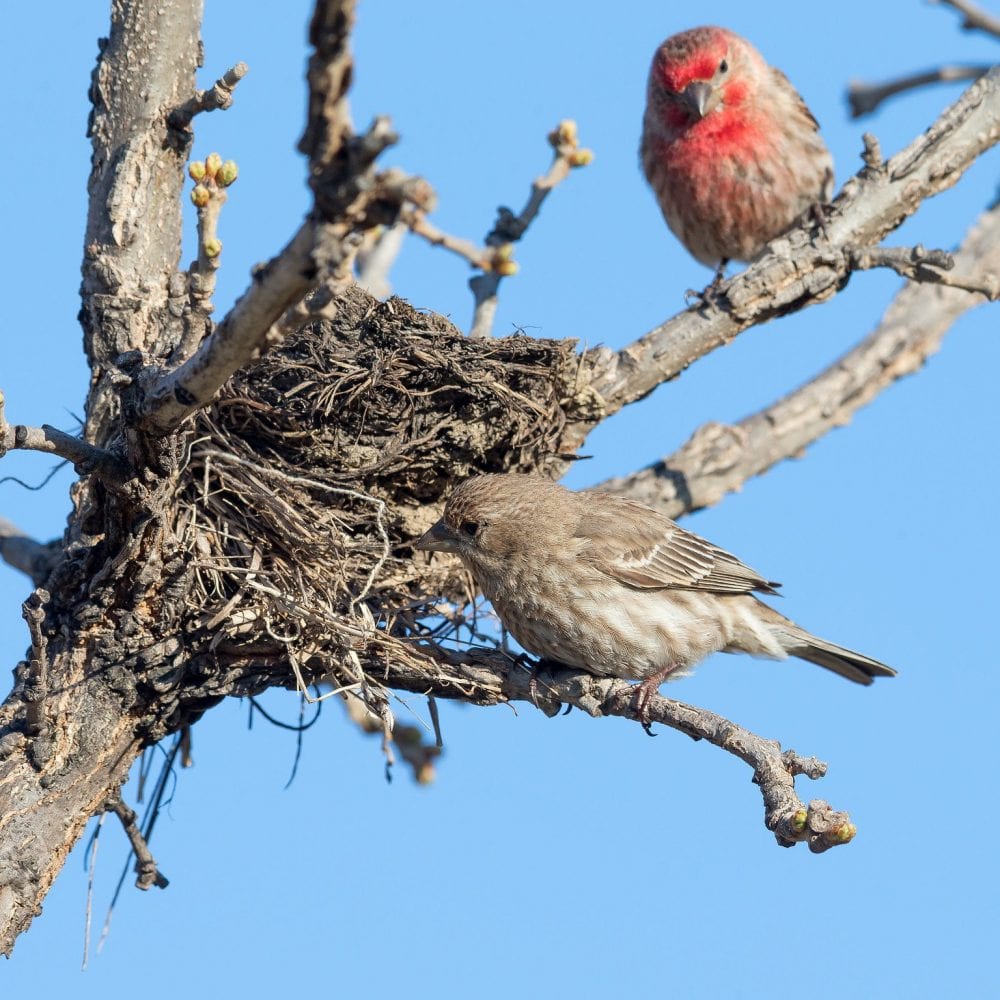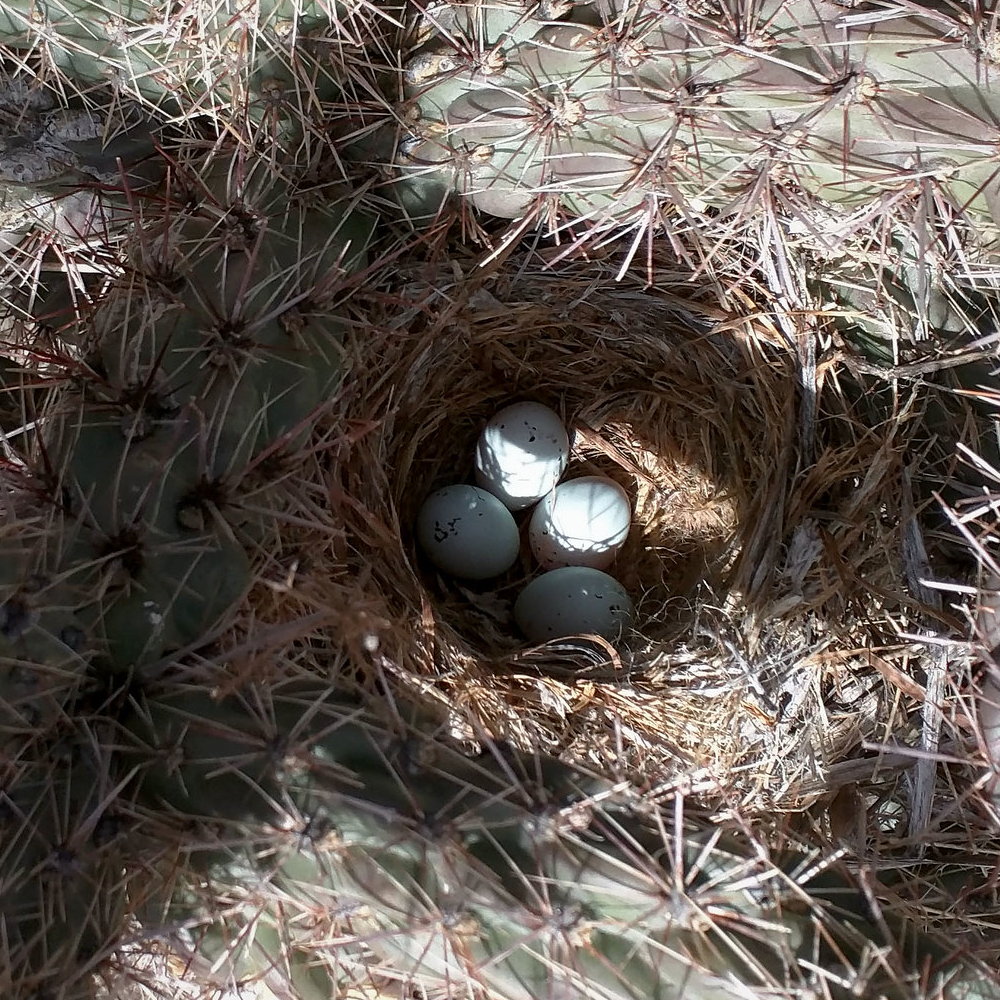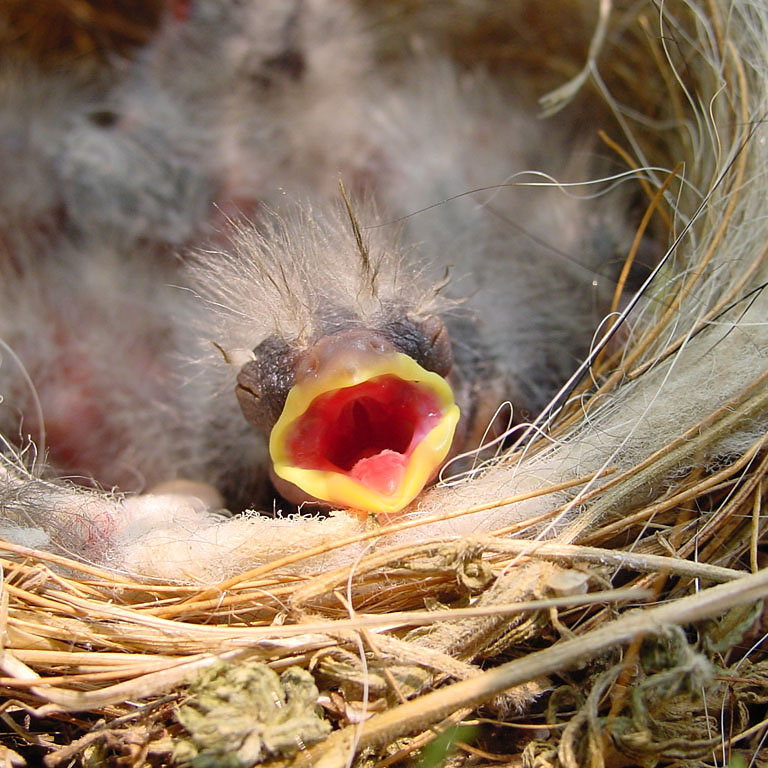House Finch
Scientific Name: Haemorhous mexicanus
Type: Bird
Family: Fringillidae (Finches)
Size: 5 to 6 inches long; 8 to 10-inch wingspan
Weight: 0.75 ounce
Life Span: up to 11 years
Physical Description
House finches are small songbirds with relatively large beaks, long heads, short wings, and a shallow notch in the tail. These birds are light brown overall with streaks of grayish brown. Females are a bit smaller than males.
Most adult males are rosy red around the face, throat, upper breast, and rump. However, some males may appear to have orange or even yellow coloring instead of red. The actual coloring for house finches is related to the pigments in the foods they eat. Each color is derived from a different carotenoid pigment and relates to what a specific bird has been eating.
Adult females do not have the bright colors of the males. Instead, most of their body is covered with blurry streaks and their face has indistinct markings. Young house finches look similar to adult females.
Male
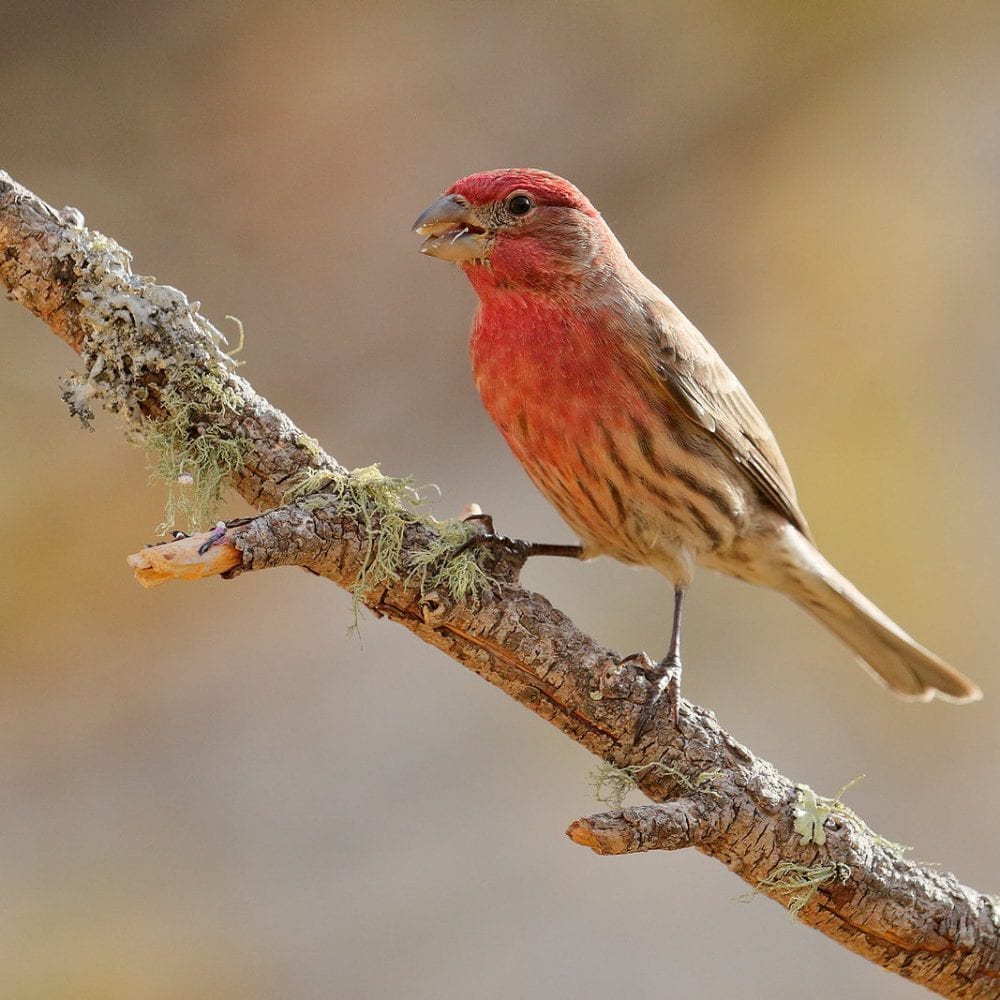
Male (Variation)
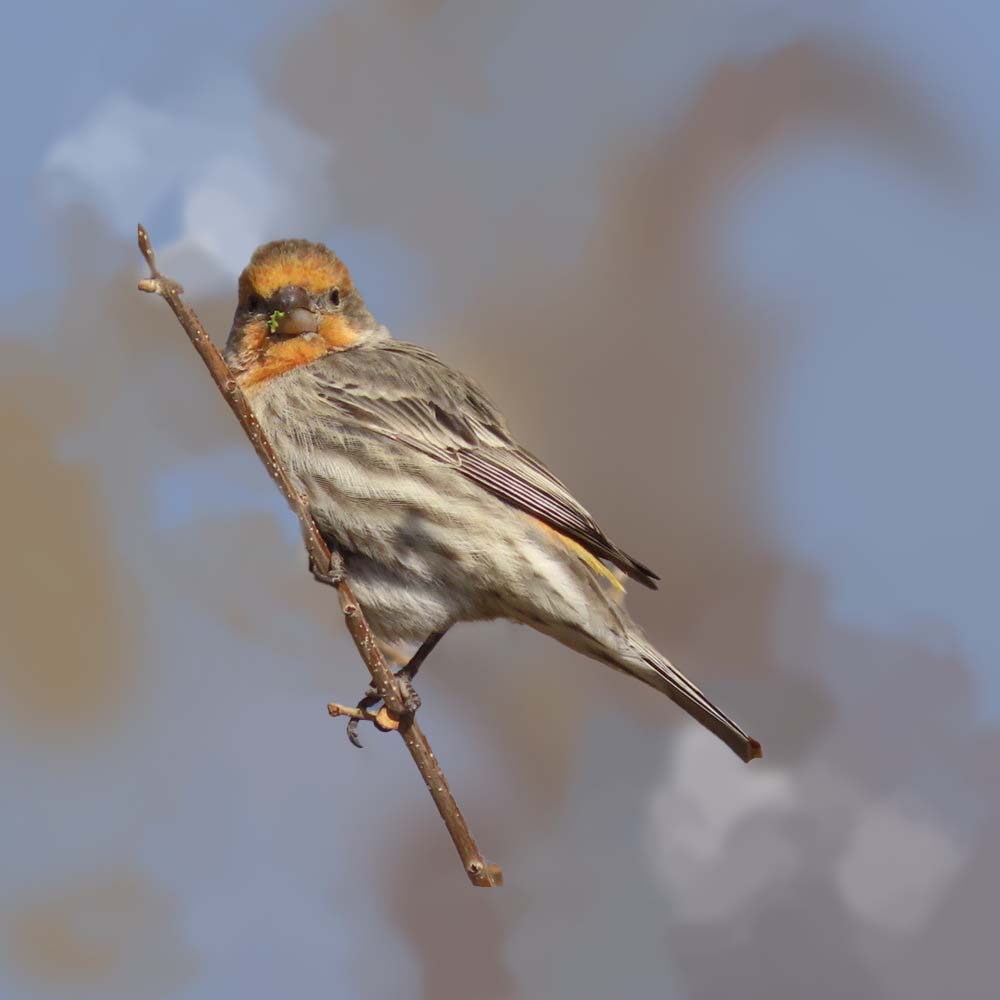
Female
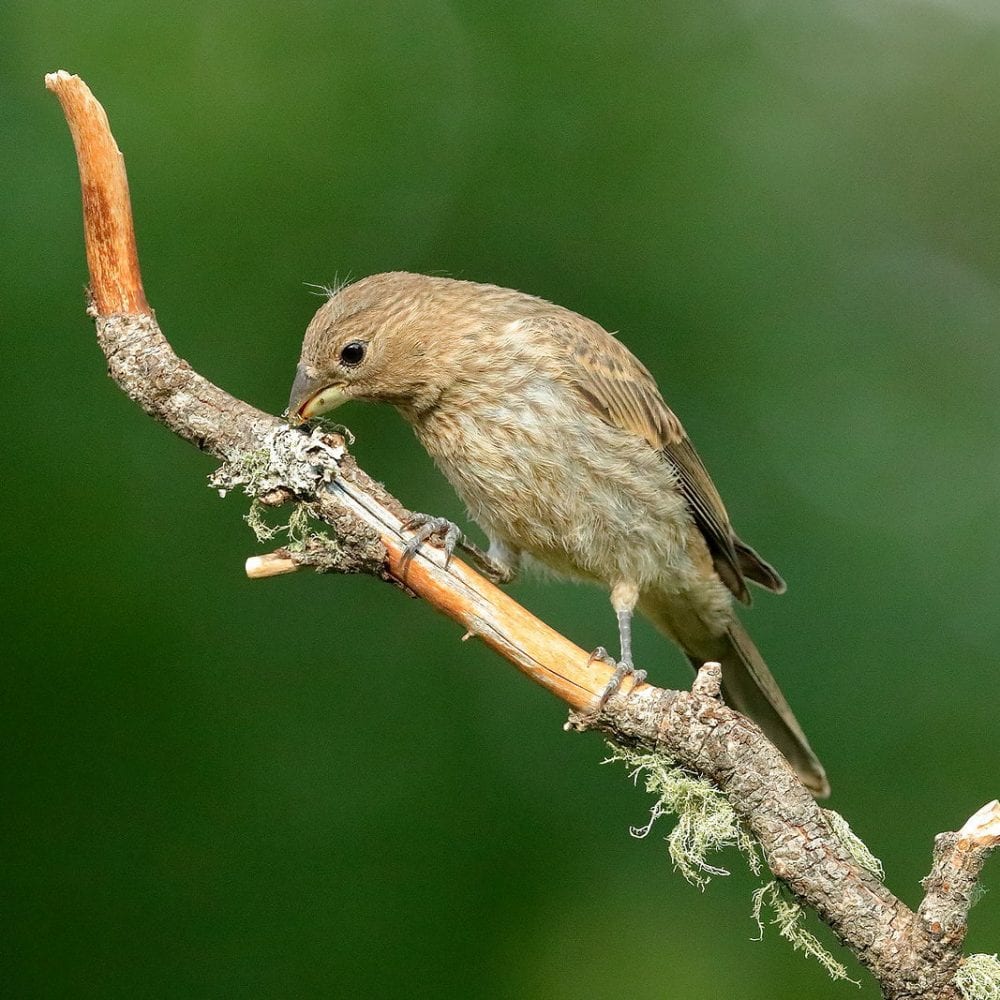
Juvenile

Range, Migration, and Habitat
House finches were originally restricted to the western portion of the United States. However, in the 1940s, birds were introduced to New York. They thrived there and eventually spread out. Currently they can be found from southern Canada southward to the Gulf of Mexico. Eastern birds now migrate to the spend winters in the southern parts of the US, whereas western birds only occasionally migrate and then only for short distances.
In the wild, house finches are found in deserts, grasslands, riparian areas, and open coniferous forests. They are also found in many urban and suburban areas, frequenting parks, backyards, farms, and forest edges.
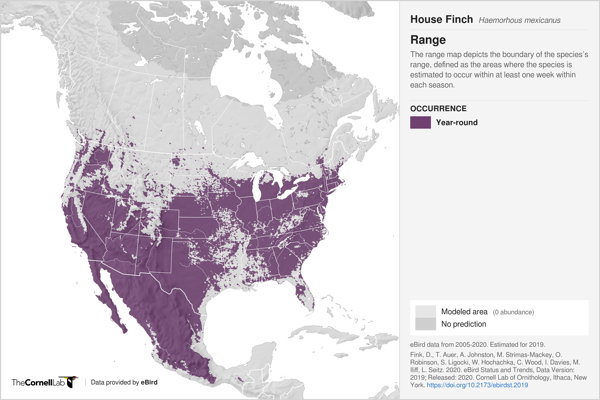
Diet
House finches eat grains, seeds, buds, and fruits, though they will sometimes eat flower parts and occasionally small insects. They are fond of seeds from thistle, dandelion, sunflower, and mistletoe.
House finches usually forage while sitting on tall grasses or up in trees and shrubs, and they tend to look for food in flocks, except while nesting. House finches readily come to feeders for seeds, especially sunflower, and to hummingbird feeders for the sugar-water.
Behavior and Social Life
House finches are active during the day and are generally gregarious rather than territorial. They are commonly found in small groups or flocks and even tend to nest close together. The whole group will move slowly from one area to another. Females in a group are usually dominant over males.
In contrast, a male will defend a small territory close to his mate and their nest. However, he will only chase or fight with another male if the intruder get too close to his partner.
House finches use calls and body signals to communicate and stay in contact with others. In general males do most of the singing which occurs around sunrise and sunset.
Life Cycle
House finches are monogamous (one male mates with one female) and usually will have formed a breeding pair by early spring. Males attract females by performing a courtship display of swooping down from high above while singing.
Females usually lay 4 or 5 spotted pale blue eggs in nests made in a protected area around 12 foot off the ground. The young hatch in about 2 weeks and are cared for by both parents. Young leave the nest around 12 to 15 days after hatching. Once the young leave the nest, the male will continue to feed them for awhile, while the female builds a new nest for the next brood. Typically there are 3 broods per year.
Title
Ecological Role
While house finches play an important role in the ecosystem as seed predators and dispersers, they also serve as a prey species for a variety of animals. Cats and hawks will take the adult birds while other large birds, small mammals, and even snakes will raid nests for eggs and newly hatched young.
Interactions With Humans
House finches are welcome visitors to bird feeders and provide much entertainment for those who welcome them to their backyards. In contrast, many farmers dislike these birds because they can cause damage to crops, particularly fruits.
Interesting Facts
- House finches were introduced to Hawaii sometime around 1870; they are known as “papaya” birds for their favorite food.
- Females prefer to mate with the reddest males.
- House finches roost in close proximity to each other, often huddling together for warmth.
- House finches like nectar and can be a nuisance at hummingbird feeders.
- House finches can drink up to 40% of their body weight on a hot day.
- The house finch diet is the most vegetarian of any North American bird.
- House finches will seek out and eat sodium salt.
- Eastern house finches have developed an eye disease known as avian conjunctivitis.
- House finches nest as early as March in most parts of the country.
- Both male and female house finches tend to return to the same area to breed, often using the same nest site as the previous year.
- House finches rarely use bird houses.



